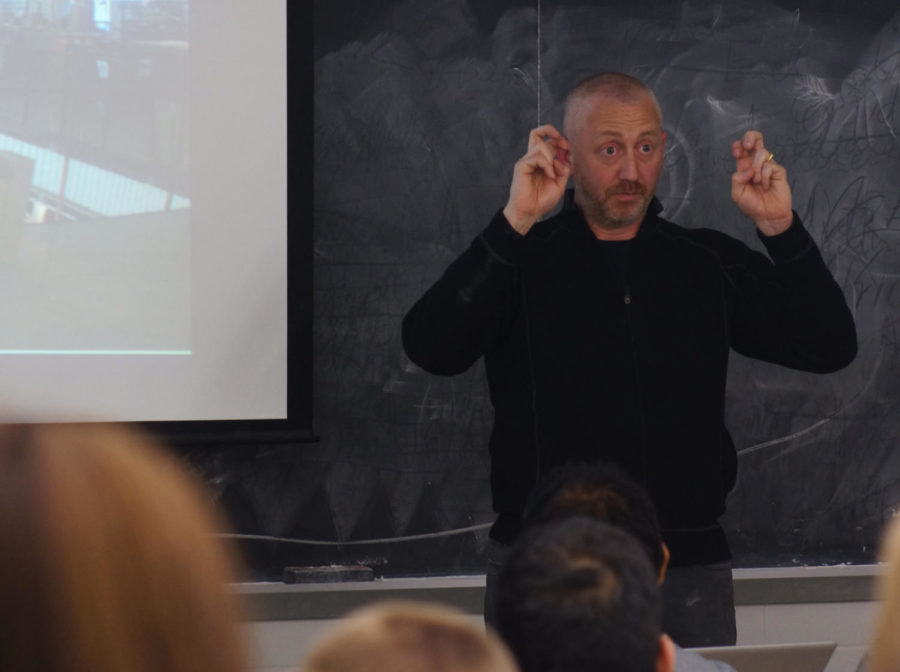ISU architecture professor wins teaching award
April 8, 2013
Rob Whitehead, assistant professor in Iowa State’s architecture department, was recently honored by the Association of Collegiate Schools of Architecture for his creative and innovative teaching methods.
“The award is something you apply for. You have to basically put together a design portfolio, if you will. Within this design portfolio, you have to explain why you did what you did and basically show your work,” Whitehead said in regards to the 2012-2013 Creative Achievement award, the honor he received from the Association of Collegiate Schools of Architecture.
Two other applicants received the same award. The Association of Collegiate Schools of Architecture “also recognizes things like best teacher, best design work, emerging faculty, etc.,” Whitehead said.
What led to Whitehead’s recognition was his “Think + Make + Break + Evaluate” methodology, a unique format for architectural education.
“In architecture there are three basic building technologies. One is structures; one is what we call environmental systems, how you interact with the environment; and then one is what we call materials and assembly,” Whitehead said.
At most universities, these building technologies are taught in three separate classes.
“My colleagues and the administration really pushed for the idea that Iowa State can be really unique by teaching all three of those building technologies in one course,” Whitehead said.
Their ideation has come to fruition by means of a five-semester program designed for architecture majors. The program heavily features Whitehead’s Think + Make + Break + Evaluate methodology.
Whitehead said the program that got an award is in its sixth semester.
“When they start off as second-year architecture students, that’s when they take this class. When they finish, they finish five semesters later with the class itself. One group has already gone through the entire sequence and from the students’ perspective, the feedback has been terrific,” Whitehead said.
Elizabeth Morales, junior in architecture and current student of Whitehead, shared her impressions of the program and Whitehead’s teaching.
“Rob’s lectures are really informative and his labs are very interactive. He shows a passion for the material being taught, which really makes his courses interesting and enjoyable to attend,” Morales said.
Although the classes can span up to 4 1/2 hours in duration, the balance between lecture-style and hands-on learning seeks to accommodate different learning preferences as well as to avoid potential monotony.
The immediate laboratory application of concepts taught in lecture is also instrumental in the students’ absorption of the material.
“This [having longer class sessions] was the key part because then you can do a lecture at the beginning, then you immediately go to a lab following the lecture. So it’s a way of saying ‘Here’s what we’re going to talk about today, here’s what you need to know.’ Then the students can go to the lab and test out what they just learned about,” Whitehead said.
Given the complexity of a field of study such as architecture, the labs performed by students vary significantly.
“Some of the labs might show things like making structures that hang off cables, some might be arches, some may be traditional concrete and some may be space-frame trestles. So we sort of take them through a whole different, progressively difficult set of structural systems through the five semesters,” Whitehead said.
For many architecture majors, the required coursework can be rigorous.
“They’re usually clocking in about 17-18 credits every semester,” Whitehead mentioned.
For this, Whitehead aims to conduct his classes in a manner that will avoid student burnout.
“I try to make these classes a little bit fun and entertaining, also,” Whitehead said. “Being educative is important, too, but if you go full-throttle the entire time, you can totally burn them out.”

















